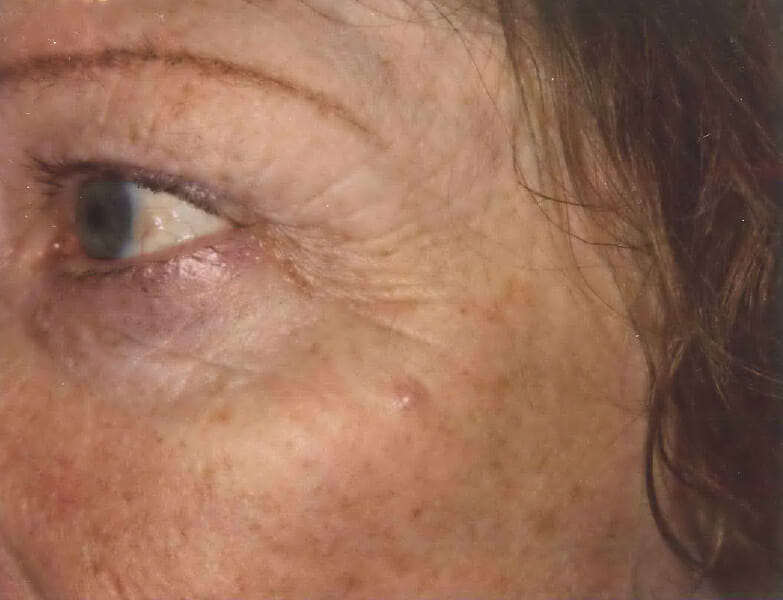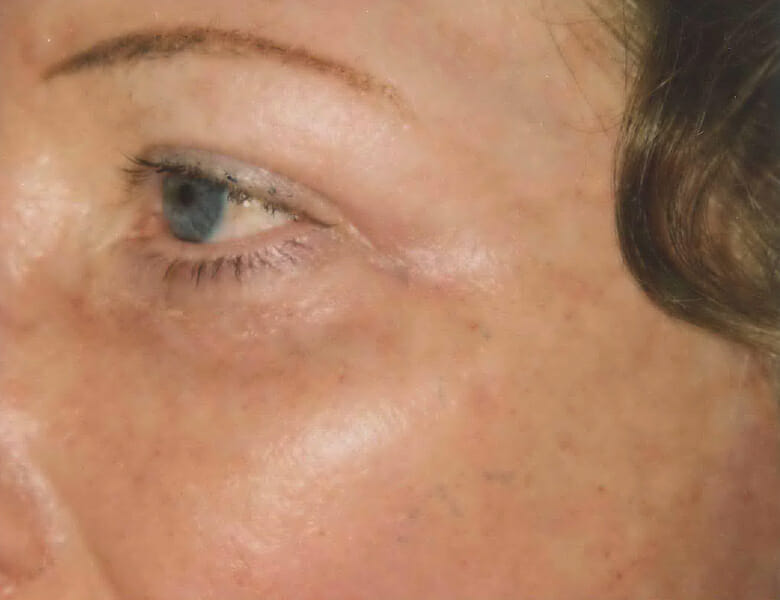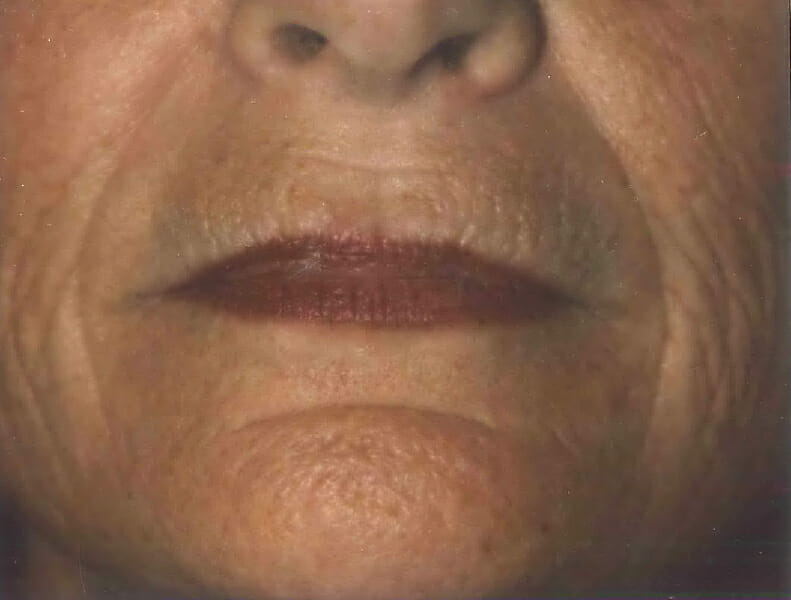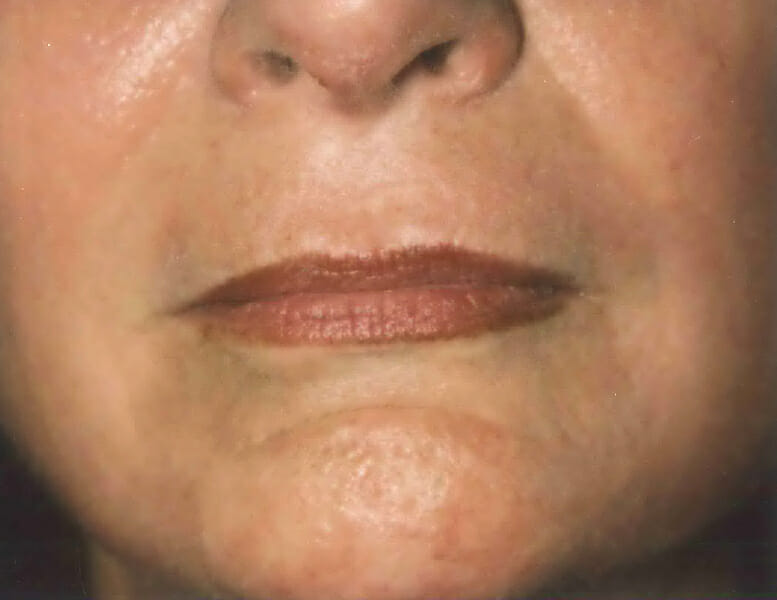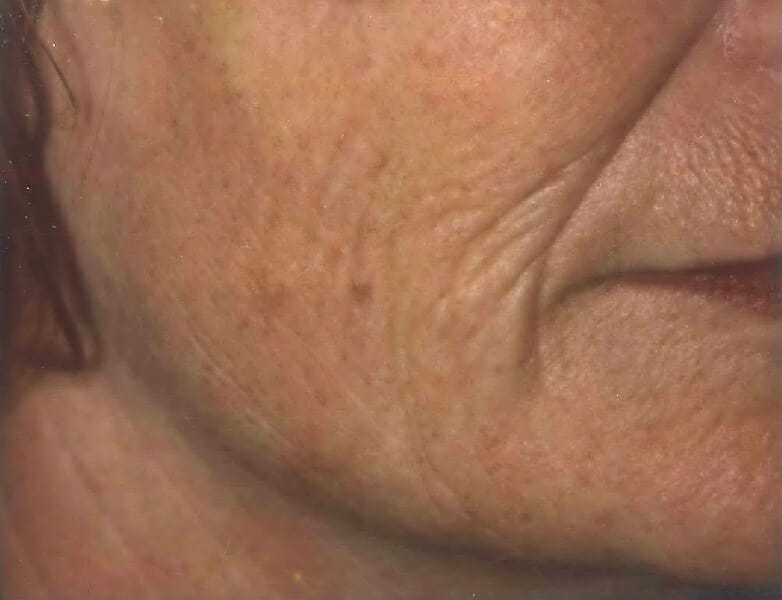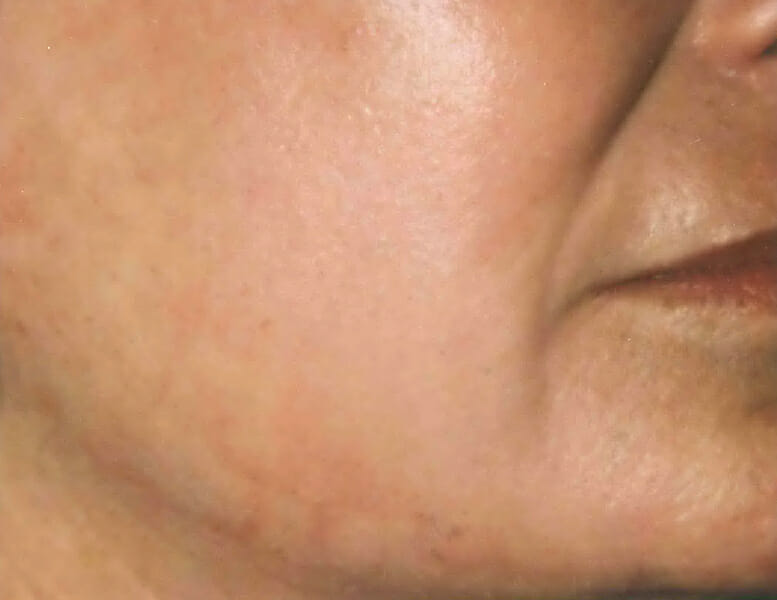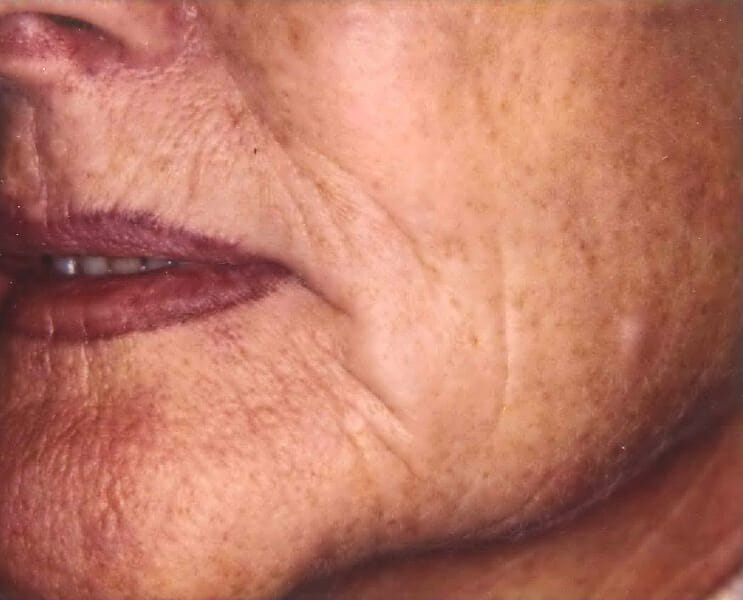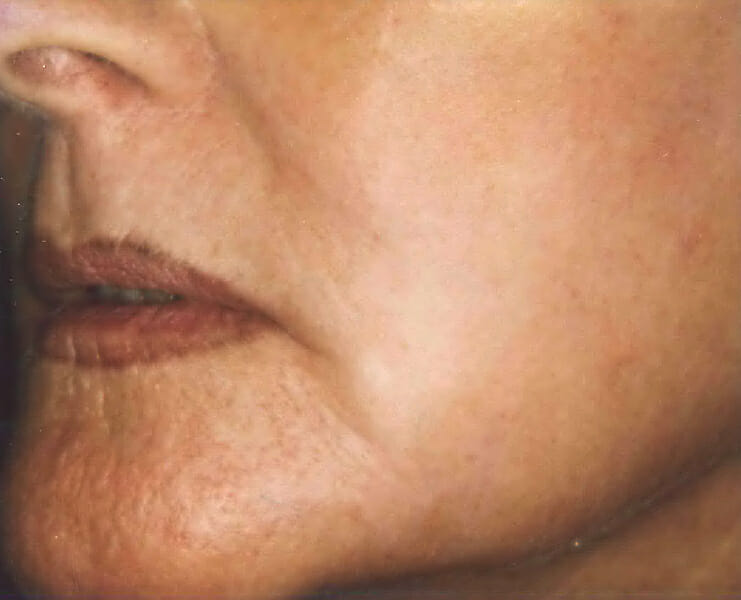
Skin Resurfacing

Time, sun damage, skin disease, and trauma all age our skin, leaving irregular pigmentation, scarring, wrinkles, and sallow or cloudy complexions. Fortunately, we have many skin resurfacing modalities that can improve its quality, diminish wrinkles, and rejuvenate the skin.
Resurfacing techniques are most commonly used to diminish wrinkles and rejuvenate the skin. However, not all resurfacing techniques are created equal. Each technique has its own limitations, risks, and periods of cosmetic disability. In most cases the rewards are substantial. Normally the more aggressive resurfacing options offer the greatest likelihood of improvement. On the other hand, more aggressive options are accompanied by longer periods of recovery. Our dermatologist can help you decide which skin resurfacing treatment is best for you.

Resurfacing treatment options at our laser skin care centre
Before and After Laser Resurfacing Photos
**Actual patients. Individual results may vary.
A.S.
The laser treatment you carried out on my face was very successful and makes me look so much younger that my wife is beginning to worry. Thanks for your kind attentions.
M.B.
Dear Dr. Nakatsui, I’m so pleased with my laser resurfacing. I really appreciate what you have done for me. I look so much better and I’m very glad I had it done. Thanks so much. Thanks also to your staff. Everyone was so helpful and nice. I appreciate the wonderful care I was given by everyone.
*The testimonials presented on any of our Company’s websites are applicable to the individuals depicted only and may not be representative of the experience of others.
Microdermabrasion
Microdermabrasion is a form of skin polishing that lifts superficial dead skin, loosens blackheads, and drains whiteheads resulting in a smoother skin texture and a more even colour. It helps people with dull, dry, rough skin, acne prone or oily skin, and mild acne scarring. A number of sessions are required before improvement is noted. The period of recovery after a treatment is usually minimal. Most people have some redness after a treatment, much like they have a light sunburn. With any resurfacing technique there is a potential for scar, infection and irregular pigmentation, although this would be rare. HydraFacial MD treatments have largely replaced microdermabrasion in our centre.
Non Ablative Laser Resurfacing
Non-ablative laser resurfacing involves the gentle application of a long wavelength of laser light (PicoWay Resolve) to stimulate collagen production, reduce wrinkles, and rejuvenate skin. We used to use the Cutera Genesis for this but found PicoWay Resolve more effective. This treatment generally helps to rejuvenate the skin by reducing fine wrinkles, evening out irregular pigmentation, and smoothing out texture changes.
While microdermabrasion is a form of aggressive exfoliation where changes to the skin occur at a superficial level, non-ablative laser resurfacing works just below the surface of the skin. It does not ablate the skin but rather passes through the superficial layers of skin and deposits the energy in the deeper dermis, creating sites of Laser Induced Optical Breakdown (LIOB). This helps stimulate collagen realignment, increase the elasticity of the skin, and remove superficial pigment. Repeat sessions are necessary to achieve maximum benefit. The recovery period from nonablative laser resurfacing is generally short. After a treatment the skin may vary in colour from pink to red. This normally fades over time and is generally gone within 48 hours. PicoWay Resolve treatments are often combined with medicated creams and microdermabrasion to achieve a synergistic benefit (3D Rejuvenation Program)
Quick Facts
Description: The PicoWay Resolve laser stimulates the deeper layers of the skin while leaving the superficial epidermis intact. Often combined with medicated creams and microdermabrasion to achieve synergistic benefits.
Average Cost: $500-1000 per treatment.
Length of Procedure: 30 minutes.
In/Outpatient: Outpatient.
Anesthesia: None.
Recovery Time: None, although skin may be slightly pink or red for a few hours after treatment.
Treatment Frequency: Six treatments over a period of six weeks.
Risks: Irritation, irregular pigmentation, persistent redness, possible wounds and scarring if performed incorrectly.
Duration of Results: Temporary, but results normally continue to improve with repeated treatment. Sun protection is essential to maintain results.
Fractional Ablative Laser Resurfacing
Whereas PicoWay Resolve is a nonablative fractional laser treatment, there are many ablative fractional laser treatments available, such as Fraxel, Pixel, DeepFX, ActiveFX, and Pearl Fractional. Treatments such as Fraxel ablate or vaporize only small columns of skin leaving intact skin between the columns of ablation.
Pearl (Erbium:YSGG) Laser
The Pearl procedure combines the impact of resurfacing lasers with the gentleness and safety of non-invasive procedures to treat aging and sun damaged skin. The Pearl is particularly effective at evening out brown discoloration in the skin caused by solar damage as well as reducing wrinkles and evening out texture. During the procedure, the top layer of the skin is treated with pulses of light in a pre-selected pattern. The laser simultaneously sends heat to the deeper layers of the skin to provide longer term benefits. The semi-ablative treatment provides a natural protective dressing over the skin to minimize downtime during the restorative process. Four to five days after the treatment the natural dressing tends to slough off leaving new, healthy, vibrant skin underneath.
Quick Facts
Description: Laser light helps restructure layers of skin, improving fine wrinkles and scars. Often combined with Pearl to address uneven pigmentation.
Length of Procedure: One hour.
In/Outpatient: Outpatient.
Anesthesia: General.
Recovery Time: Normally return to work in five days.
Risks: Burns, scarring, pigmentation changes, infection, persistent redness, activation of herpes virus infections (cold sores) around the mouth.
Duration of Results: Results and duration of improvement vary. Aging and sun exposure can affect results.
Pearl Fractional (Erbium:YSGG) Laser
The Pearl Fractional is a recent advancement in the resurfacing treatments available for the treatment of wrinkles and texture changes in the skin. Laser pulses place tiny holes deep in the skin selectively removing columns of damaged tissue leaving the surrounding skin intact. Patients see an improvement in photo damage, tone and texture as well as a noticeably smoother brighter complexion. The Pearl Fractional is often combined with the Pearl to achieve maximum benefit (Pearl Fusion). The photo below shows one of our patients after one treatment with Pearl Fusion. Additional benefit can be seen with more treatments.
**Actual patient after one treatment. Individual results may vary.
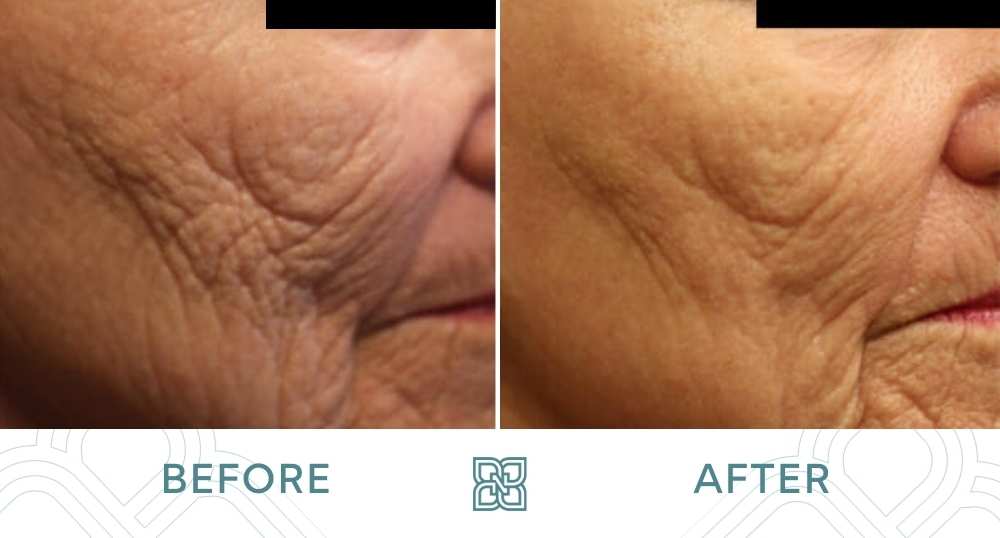
**Actual patient after one treatment. Individual results may vary.
Quick Facts
Description: Laser light helps restructure layers of skin, improving fine wrinkles and scars. Often combined with Pearl to address uneven pigmentation.
Length of Procedure: One hour.
In/Outpatient: Outpatient.
Anesthesia: General.
Recovery Time: Return to work in five days.
Risks: Burns, scarring, pigmentation changes, infection, persistent redness, activation of herpes virus infections (cold sores) around the mouth.
Duration of Results: Results and duration of improvement vary. Aging and sun exposure will affect results.
OPUS Fractional Plasma Resurfacing

Fractional plasma resurfacing is our newest addition to our resurfacing skin rejuvenation techniques. Whereas we have used the entire gamut of lasers to rejuvenate the skin and resurface the skin, we now have a new type of resurfacing that has less downtime than our lasers for the same amount of benefit. Opus Plasma is a first-of-its-kind tunable microplasma technique to reverse the signs of aging.
Ablative Laser Resurfacing
Carbon Dioxide Laser Resurfacing Technique
Patients with advanced sun damage of their skin and severe scarring do best with the carbon dioxide fractional laser resurfacing technique. In this case the surgeon has a great deal of control in the removal of wrinkles and evening out pigment and texture changes. The results can be very dramatic. The post operative recovery time is about fourteen to twenty-one days. During this healing period people must avoid sun exposure because the skin is quite sensitive.
Ablative laser resurfacing is the most advanced care for severely damaged skin (texture changes, irregular pigmentation, deep wrinkles), and scars. We use the ActiveFX and DeepFX laser systems for our patients. Although similar to devices such as Fraxel, ActiveFX and DeepFX carbon dioxide fractional laser techniques are more aggressive and require more downtime and recovery. On the other hand, they also provide more improvement over these less aggressive therapies. Our dermatologist, Dr. Nakatsui, can help you decide is this treatment is right for your skin.
Quick Facts
Description: ActiveFX and DeepFX carbon dioxide laser is used to remove the upper layers of the skin and reach into the dermis to improve scars, fine lines and wrinkles and to treat irregular pigmentation.
Length of Procedure: 30 minutes to an hour and a half.
In/Outpatient: Outpatient.
Anesthesia: General.
Recovery Time: Return to work within two weeks.
Treatment Frequency: May be repeated if necessary.
Risks: Burns, scarring, pigmentation changes, persistent redness, infection, activation of herpes virus infections (cold sores).
Duration of Results: Normally long-lasting, but aging will affect results. Sun protection is essential to maintain results.
Comment
The above treatment options help rejuvenate the skin by reducing wrinkles via collagen stimulation and elastin production. In the early stages of gravity pull, nonsurgical skin tightening using Morpheus8 RF microneedling can be helpful. Gravity changes that result in redundant skin require re-draping surgical procedures and deep muscle pull creases require Botox whereas volume loss requires dermal fillers. Facial veins and deep pigmented lesions require treatment with target specific lasers.
Many patients start with the milder treatments and eventually move on to the more effective, aggressive treatments for aging changes. One treatment does not preclude the use of others.
Many patients begin with medicated creams, then move through the spectrum of HydraFacials, non-ablative and fractional ablative laser resurfacing, plasma resurfacing, and then on to ablative laser resurfacing or plasma resurfacing as aging changes continue to progress. Others are happy to stay with the least aggressive options. What might be good for one person may not be good for another or may not be good at a certain period of time in their life. Whatever treatment is chosen, it’s important to reflect on the procedure, alternatives, risks, limitations, and the experience of the surgeon.

